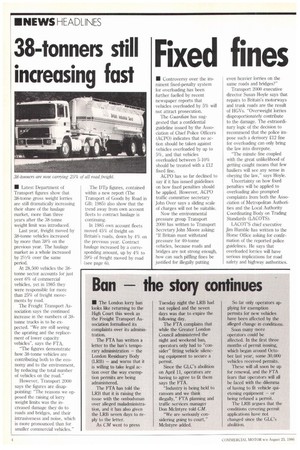38-tonners still increasing fast
Page 6

If you've noticed an error in this article please click here to report it so we can fix it.
• Latest Department of Transport figures show that 38-tonne gross weight lorries are still dramatically increasing their share of the haulage market, more than three years after the 38-tonne weight limit was introduced.
Last year, freight moved by 38-tonne vehicles increased by more than 38% on the previous year. The haulage market as a whole increased by 21/2% over the same period.
At 28,500 vehicles the 38tonne sector accounts for just over 6% of commercial vehicles, yet in 1985 they were responsible for more than 25% of freight movements by road.
The Freight Transport Association says the continued increase in the numbers of 38tonne trucks is to be expected. "We are still seeing the uprating and the replacement of lower capacity vehicles", says the FTA.
"The figures demonstrate how 38-tonne vehicles are contributing both to the economy and to the environment. by reducing the total number of vehicles on the road."
However, Transport 2000 says the figures are disappointing: The reasons we opposed the raising of lorry weight limits was the increased damage they do to roads and bridges, and their intrusiveness and noise, which is more pronounced than for smaller commercial vehicles." The DTp figures, contained within a new report (The Transport of Goods by Road in GB: 1985) also show that the trend away from own account fleets to contract haulage is continuing.
In 1985 own account fleets moved 45% of freight on Britain's roads, down by 4% on the previous year. Contract haulage increased by a corresponding amount, up by 4% to 59% of freight moved by road (see page 6).












































































